Streamlined process makes SHRP P&T more transparent
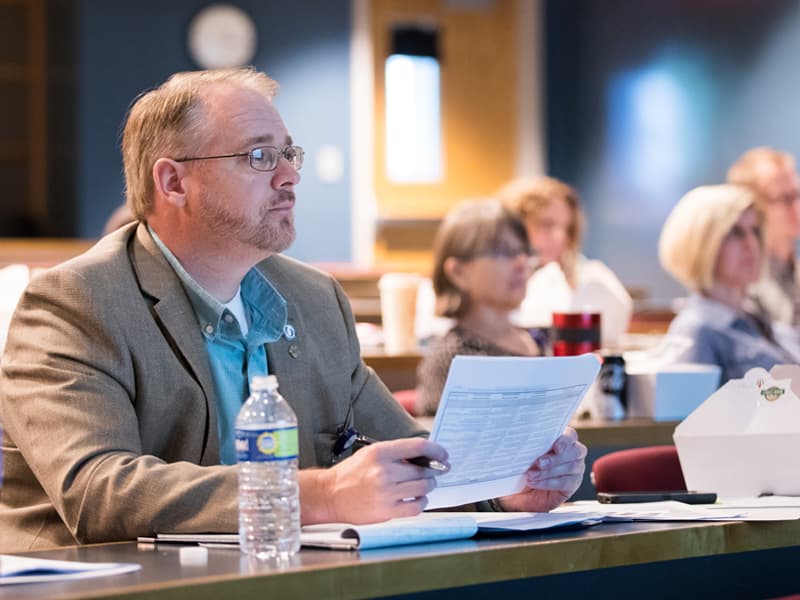
When Dr. Lisa Morton first became eligible for promotion to associate professor of health informatics and information management in the School of Health Related Professions at the University of Mississippi Medical Center, her thought process was to write a self-assessment narrative, seek potential references and submit her portfolio.
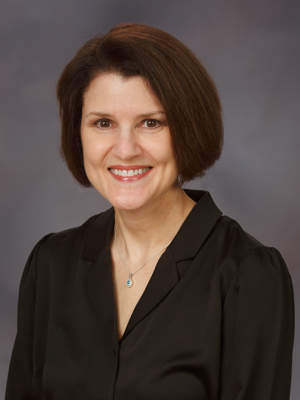
She found navigating the school’s promotion and tenure process – like those at most other academic institutions throughout the country – to be a bit more complicated.
“The promotion and tenure criteria then was very broad and very vague,” Morton said. “I wasn’t really sure what some of the criteria actually were.”
She sought clarification from her chair, who said, “You’ve met the criteria, so you need to demonstrate that to the committee,” Morton recalled. She also met with SHRP’s Promotion and Tenure Committee chair that year.
“His advice was, ‘Get straight to the point,’” Morton said.
The need for a clearer understanding of the school’s promotion and tenure process – also known as P&T – by SHRP faculty is what led Dr. Mark R. Gray, associate professor of radiologic sciences and associate dean for academic affairs, and Dr. Jessica H. Bailey, SHRP dean, to conceive of a plan to streamline what had been a cumbersome and sometimes ambiguous practice.
“We wanted to be transparent about the process,” Gray said. “We don’t want it to be perceived as a mystery. When some of the faculty came up for promotion, they had questions about the process and needed clarification on the criteria it would take to achieve it.
“We realized we needed to relaunch the way we were doing P&T and develop a strategic plan for improving the process.”
Their five-year strategic plan had four main “phases” – the first was to establish a rubric for the three critical assessments of teaching, service and research that would provide uniform criteria for the P&T candidates, regardless of what department they represented in the school. Gray worked to initiate the rubric, which allocates a point system for meeting specified criteria.
“Our faculty are usually confident in meeting the teaching requirements for promotion, because that is primarily what they do,” Gray said. “Not knowing the degree of activities that counted toward service and especially towards research were the two mission areas that led to most questions from the faculty.”
With the new rubric established, the second phase was to develop policy and procedures that would outline the entire P&T process. As it happened, Gray said the Medical Center was updating its overall institutional policies and laying out broader guidelines for P&T at that time, which proved the most opportune moment for the school to examine its new procedures and make sure they conformed to those of the institution.
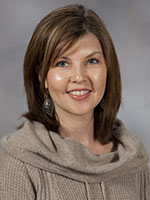
Dr. Christy M. Morgan, professor of occupational therapy, served as Promotion and Tenure Committee chair during this phase and played an instrumental role organizing SHRP’s policies and procedures into a highly structured process.
With new policies and procedures in place, the third phase of the plan was to introduce an electronic portfolio for faculty to display their narratives and supporting exhibits. In addition, the electronic portfolio provided members of the committee a convenient online platform to review the candidates’ portfolios instead of passing around hard copy binders for review with a short turnaround time.
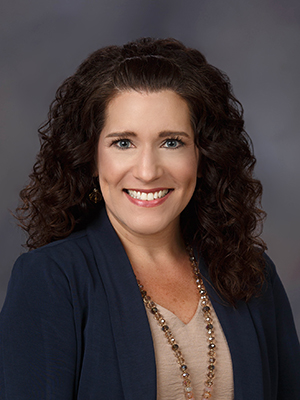
Under the leadership of Dr. Kristi Moore, associate professor of radiologic sciences, a unique repository in the Canvas platform was developed to help the candidates make their way through the process.
“None of the other schools are using this platform,” Moore said. “As chair of the P&T Committee, we piloted it in Academic Year 2015-16, giving the candidates the option of submitting hard copy or electronic portfolios through Canvas. After the process had concluded, we asked for feedback from submitters and committee members alike, made some modifications, and in Academic Year 2016-17 it became mandatory as the electronic portfolio process.”
The fourth and final phase of the plan was to provide comprehensive P&T information to the faculty as early as possible. Beginning this academic year, the faculty development phase included a Promotion and Tenure Educational Forum for junior SHRP faculty interested in learning about the process, a Canvas course – initially for forum attendees and later for all faculty – that included promotion and tenure resources, and a slate of P&T “Meet and Greets” for faculty to interact with P&T Committee members.
“We were extremely excited to launch the Canvas P&T Resources Course,” Moore said. “SHRP faculty can earn their digital credential for P&T for using this process, completing an assessment and participating in a discussion board. Regardless of where they may be, this is the one place where everything they need for P&T will be located.
“We feel this is a great opportunity for faculty development and for onboarding faculty.”
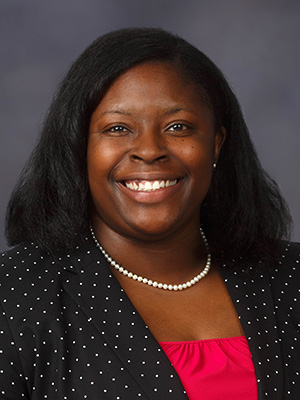
Robin Thompson, who just joined the SHRP faculty last July as an assistant professor of health sciences, attended the forum. She said she feels she has a firm grasp of the school’s P&T process.
“When I got here, I had no idea what I needed to do to advance,” Thompson said. “Was promotion based on annual evaluations, my dean’s recommendation or receiving a terminal degree? What was the procedure? Would it be something I would truly be interested in? I didn’t know.
“When I got to the forum, everything started making sense. They gave very clear, detailed examples of what was expected and provided multiple avenues in which you could achieve the criteria. They provided us with working knowledge that was useful.”
Some unique aspects of SHRP’s revamped P&T process, according to Gray, is its requirements for supporting documentation and for the candidates to conduct their own self-evaluation using the rubric.
“Not only are faculty saying they are doing certain things, like attending a conference or giving a presentation, they are submitting evidence to support their narrative and activities, along with a self-evaluation of their portfolio to help ensure the candidates that they have submitted adequate supporting evidence to meet the criteria for promotion,” Gray said. “It’s like a personal accreditation process – instead of a programmatic evaluation, it’s a personal evaluation so they can do self-studies of their own work and accomplishments.”
Thompson had been at UMMC for only two months when she began this self-evaluation. She received “Thank You” notes from fellow faculty members for things she had done for them, attended a conference and was asked to serve on committees.
“I immediately started a file to store these documents so when it comes my time (for P&T consideration), I can have these things readily available,” she said. Having just become a Quality Matters reviewer, she also was able to log into Canvas to participate in the P&T discussion forum, submit her Quality Matters reviewer evidence and earn her digital P&T credential.
“As a new faculty member, this is an opportunity to not only document and collect what I’m doing as I go along, but to evaluate myself as well. Am I meeting institutional goals and objectives? Am I taking part in service opportunities? Am I doing enough research?
“If I’m doing these things and verifying these things, I should have no problem achieving the criteria for promotion levels in the P&T rubric.”
Morton said she would have welcomed the finely tuned P&T process when she first sought promotion and, subsequently, tenure. Since achieving advancement under the old process, she has served on SHRP’s Promotion and Tenure Committee, has conducted several external P&T reviews for faculty at other institutions and has achieved promotion to professor of health informatics and information management under the newly revised P&T rubric.
The difference, she said, is like night and day.
“I felt less in the dark,” she said. “Anytime you turn in a portfolio, you feel a certain level of uncertainty and hope the committee likes what you’ve submitted. I really felt less confident with the old rubric because I didn’t know on a scale of excellence where I fell.
“The new rubric shows exactly where you fall . . .This rubric still covers much of the same content, but is much more specific.”


